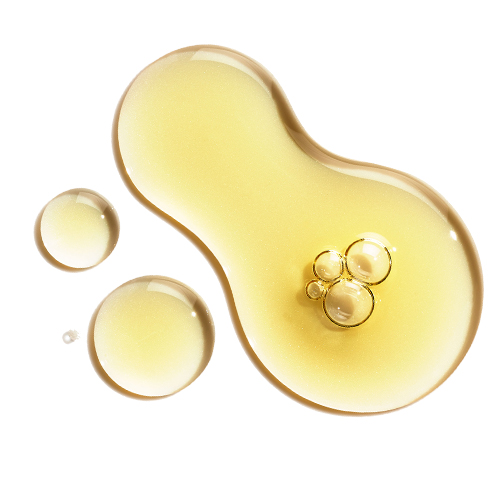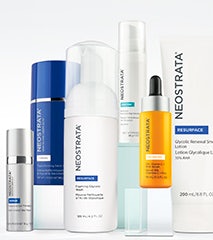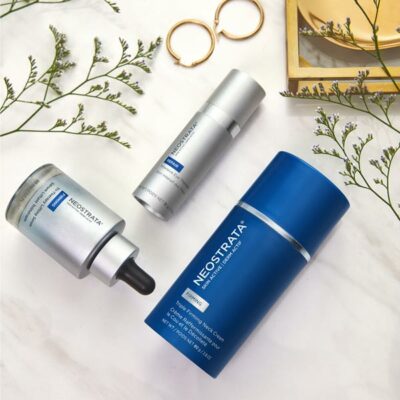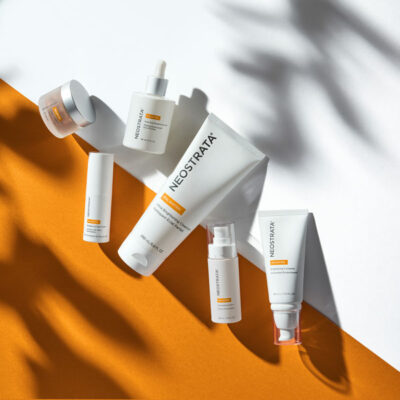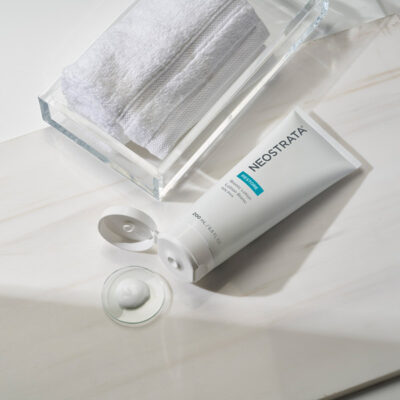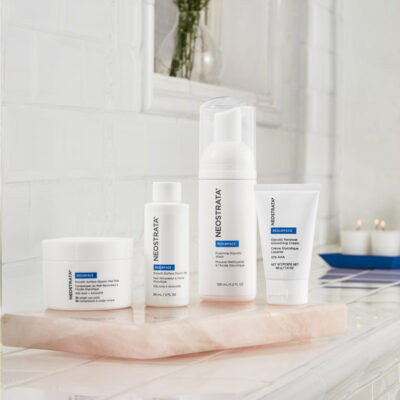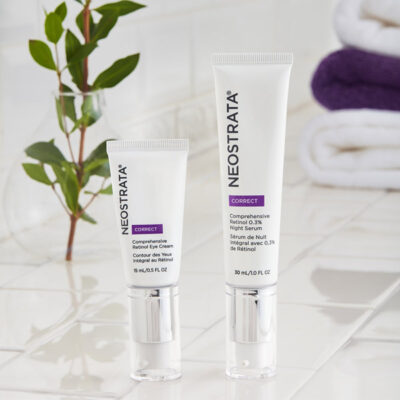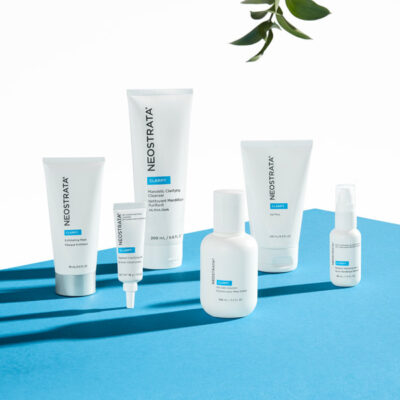What Causes Dry Skin?
DRY SKIN SIGNS & SYMPTOMS
Feel like you’re battling dry skin – no matter what time of year it is?
Dry skin happens when the skin doesn’t retain enough of the moisture-rich water, lipids and oils that keep it healthy. As a result, the skin barrier becomes impaired and the skin looks and feels dry, rough, scaly and itchy.
Signs and symptoms of dry skin range from mild to severe and can vary depending on age, coexisting medical conditions and environmental factors, but likely include one or more of the following symptoms:
-
Skin that feels and looks rough, scaly or flaky
-
A feeling of skin tightness, especially after bathing or swimming
-
Itching (pruritus)
-
Burning, stinging or redness
-
Fine lines or crepiness in the skin
-
Calloused, rough, cracked skin
-
Gray, ashy skin

WHAT CAUSES DRY SKIN
Anyone can develop dry skin. While the cause is most often environmental, genetics and certain diseases can also play a significant role. Causes of dry skin can include one more of the following:
-
CLIMATE
Skin is generally driest in the winter, when temperatures and humidity levels drop. Winter can also cause preexisting skin conditions (like eczema and psoriasis) to worsen. -
HUMIDITY
Winter is a peak time for dry skin due to low humidity in the air and from central heating systems, but air conditioning can also cause dry skin because it removes much of the moisture from the air. -
BATHING AND SWIMMING
Showering or bathing for long periods in hot water can strip the skin barrier of precious lipids. Frequent swimming in heavily chlorinated pools can have the same effect. -
HARSH CLEANSERS
Harsh soaps and detergents can also wreak havoc on skin. Normal skin has a balance of moisture and oils and is slightly acidic at a pH of ~5.0. Soaps tend to be much more alkaline with a pH of ~10.0. Synthetic detergents are a better choice with a pH closer to healthy skin. -
SUN EXPOSURE
Sun exposure in any climate can dry out the skin. UV rays penetrate deep below the skin’s surface, leading to wrinkles and sagging skin. Sun-exposed skin gradually loses moisture and essential oils, making it appear dry, flaky and prematurely wrinkled. -
LIFESTYLE FACTORS
Our daily habits, stress levels and diet can all have an effect on our skin. Lack of sleep, increased stress, smoking and alcohol use can all contribute to dryness and premature ageing of the skin. -
GENETICS
We are all born with different skin types (like dry, normal or oily) and levels of skin sensitivity. Genetics are believed to be linked to our skin type and why some people develop skin conditions like eczema, ichthyosis vulgaris and psoriasis.Researchers have found that some people have a gene flaw that causes a lack of a type of protein, called filaggrin, in their skin. This protein is essential for skin barrier function, helping to form a protective layer at the surface of the skin that keeps water in and foreign organisms out. Reduction or complete absence of this important protein leads to impaired formation of the skin barrier.
-
AGEING
As we age, we tend to lose collagen and natural oily secretions from glands in our skin. Normal cell turnover slows down (even if we don’t), our skin barrier becomes weaker and can’t repair itself as easily. Couple this with environmental exposures, hormonal changes and any medical conditions or medications – and you have a recipe for dry skin. -
MEDICATIONS
There are certain medications that cause dry skin by reducing the stratum corneum’s water content. Common medications that can cause dry skin include retinol, acne or blood pressure medications.

A REGIMEN TO CARE FOR DRY, SENSITIVE SKIN
The ideal regimen for dry, sensitive skin should reduce skin dryness, irritation and itching, as well as enhance the skin’s appearance and protective function by helping to restore the skin barrier.
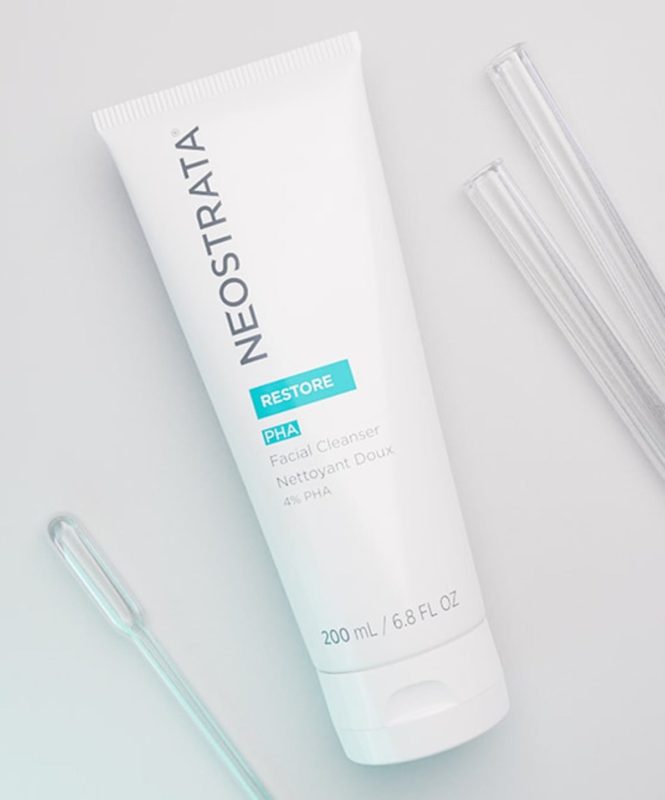
CLEANSER
Dry, sensitive skin needs a gentle, soap-free, fragrance-free cleanser. NEOSTRATA® PHA Facial cleanser gently cleanses and prepares the skin to optimise the skincare regimen that follows. Formulated with a non-irritating Polyhydroxy Acid (PHA), known to lightly exfoliate without drying skin’s protective moisture barrier.
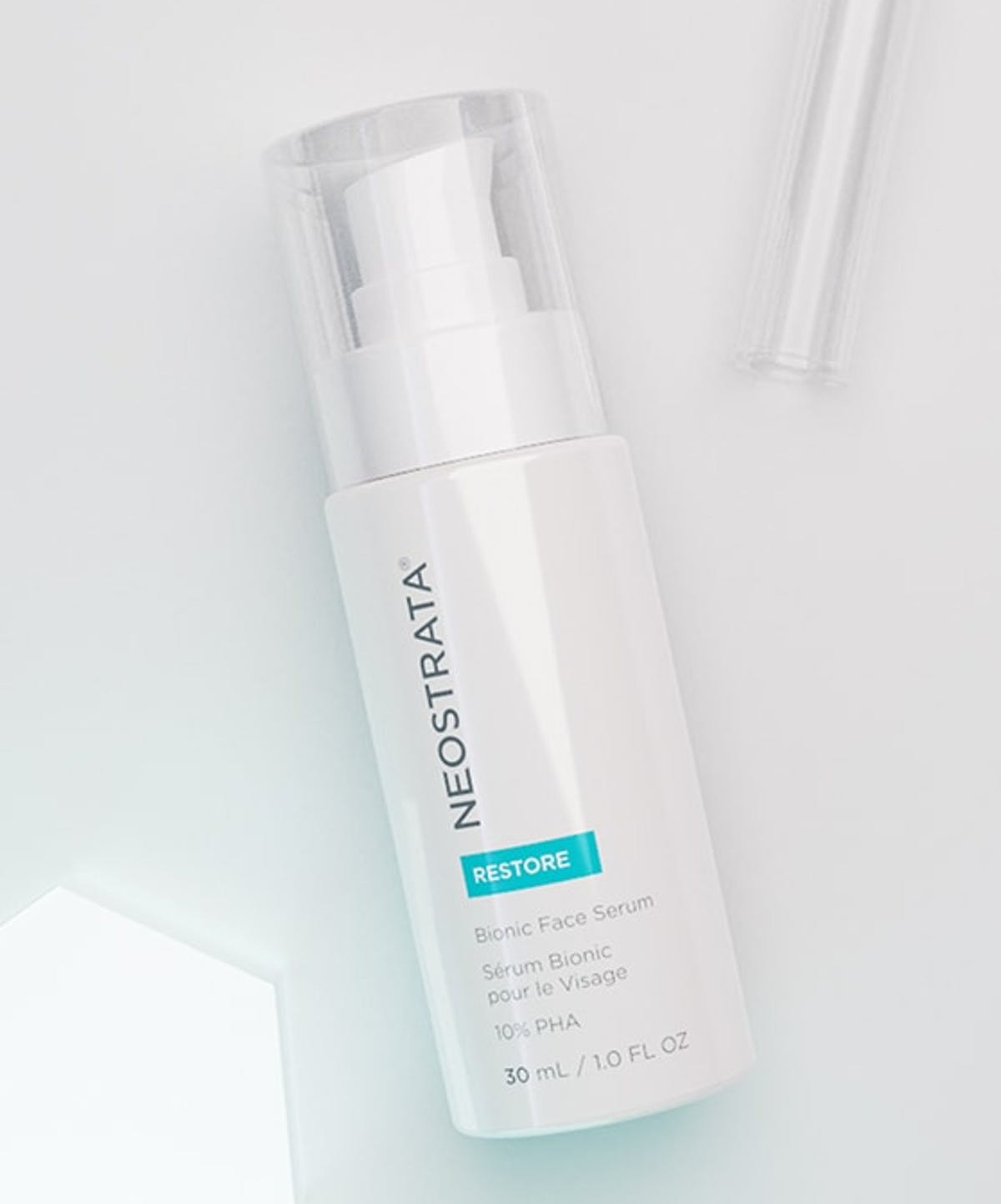
SERUM
Applying a serum before moisturising will give dry skin an extra boost and add a layer of protection from the elements. Try our NEOSTRATA® Bionic Face Serum with 10% Polyhydroxy Bionic Acid, a potent antioxidant to help support skin’s moisture barrier and protect against environmental factors.
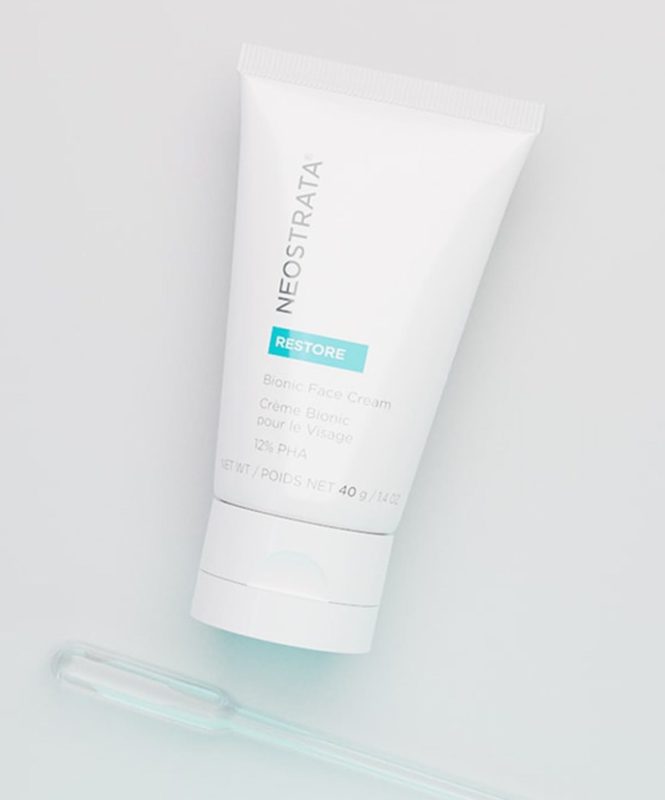
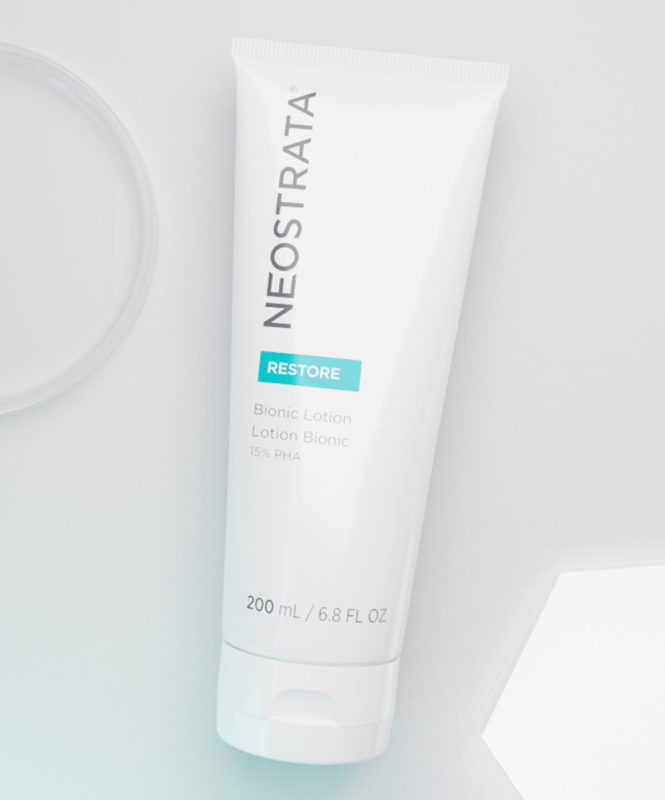
MOISTURISER
The best moisturisers for dry skin have a combination of moisturising ingredients that prevent water loss and restore skin hydration. NEOSTRATA® Bionic Face Cream provides intense hydration and helps soothe and revitalise the look of stressed skin. It’s also non-comedogenic and fragrance free – ideal for dry, sensitive skin. NEOSTRATA® Bionic Lotion helps fortify face and body with a high-strength 15% Polyhydroxy Acid (PHA) blend, attracting and binding moisture to the skin. Formulated to gently exfoliate, smoothing rough, dry skin while providing restorative antioxidants to help protect against environmental factors.
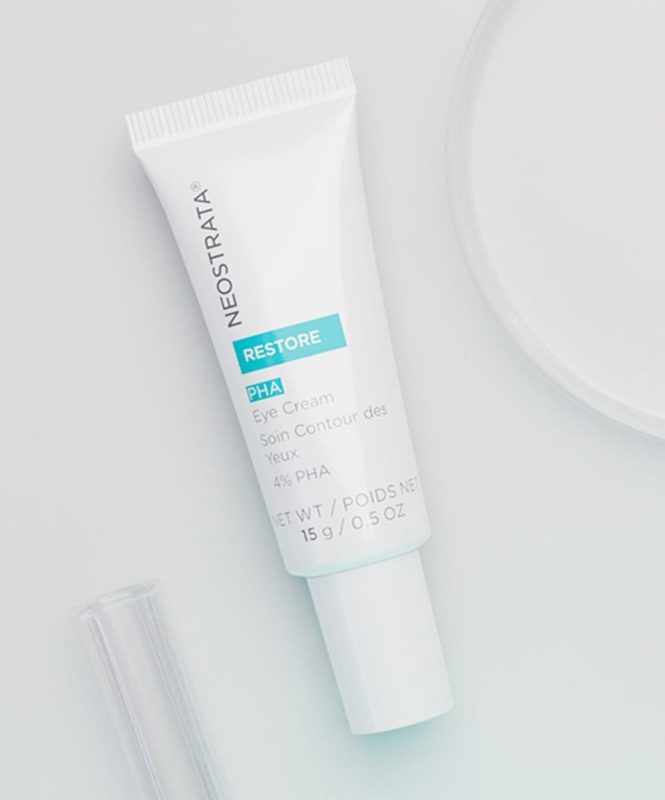
EYE CREAM
The skin around our eyes is more delicate and thinner than other facial skin, which can be exaggerated for those with dry skin. NEOSTRATA® PHA Eye Cream combines antiageing Polyhydroxy Acid (PHA) technology known to protect the skin’s moisture barrier in a light cream, containing nourishing oils and Hyaluronic Acid to hydrate and soothe the delicate eye area.
Looking for other ways to treat dry skin and learn how tweaking certain everyday habits can help treat dry skin? Learn more: How To Treat Dry Skin.
At NEOSTRATA®, we believe that visible results come from renewing the layers of the skin. We recognise that everyone’s skin is unique and we have created key collections which aim to achieve healthy-looking skin at every life stage.
VIEW COLLECTIONS
LEARN HOW TO USE OUR PRODUCTS
REFERENCES
- Guenther L, et al. Pathway to Dry Skin Prevention and Treatment. Journal of cutaneous medicine and surgery. 16. 23-31. 10.2310/7750.2011.10104.
- Dry skin – American Academy of Dermatology. https://www.aad.org/public/diseases/dry-sweaty-skin/dry-skin#causes
- Dry skin – Mayo Clinic. https://www.mayoclinic.org/diseases-conditions/dry-skin/symptoms-causes/dxc-20248892
- Madison K. C. 2003. Barrier function of the skin: “la raison d’etre” of the epidermis. J. Invest. Dermatol.121: 231–241.
- Tončić R, et al. Skin barrier and dry skin in the mature patient. Clinics in Dermatology,Volume 36, Issue 2, 2018, Pages 109-115.
- Proksch E. pH in nature, humans and skin. The Journal of Dermatology. 2018;0(0). 10.1111/1346-8138.14489
- Tarun J, Susan J, Suria J, Susan VJ, Criton S. Evaluation of pH of Bathing Soaps and Shampoos for Skin and Hair Care. Indian J Dermatol. 2014;59(5):442-4.
- Ortiz A, et al. Smoking and the skin. Int J Dermatol. 2012 Mar;51(3):250-62. doi: 10.1111/j.1365-4632.2011.05205.x.
- Altemus M, et al. Stress-induced changes in skin barrier function in healthy women. Journal of Investigative Dermatology. 2001;117(2):309–317.
- Sandilands A, Sutherland C, Irvine AD, McLean WH. Filaggrin in the frontline: role in skin barrier function and disease. J Cell Sci. 2009;122(Pt 9):1285-94.
- Hashizume, H. (2004), Skin Aging and Dry Skin. The Journal of Dermatology, 31: 603-609.
- Itchy, Scratchy Skin: Preventing and Managing Xerosis https://www.pharmacytimes.com/publications/issue/2013/ june2013/itchy-scratchy-skin-preventing-and-managing-xerosis




